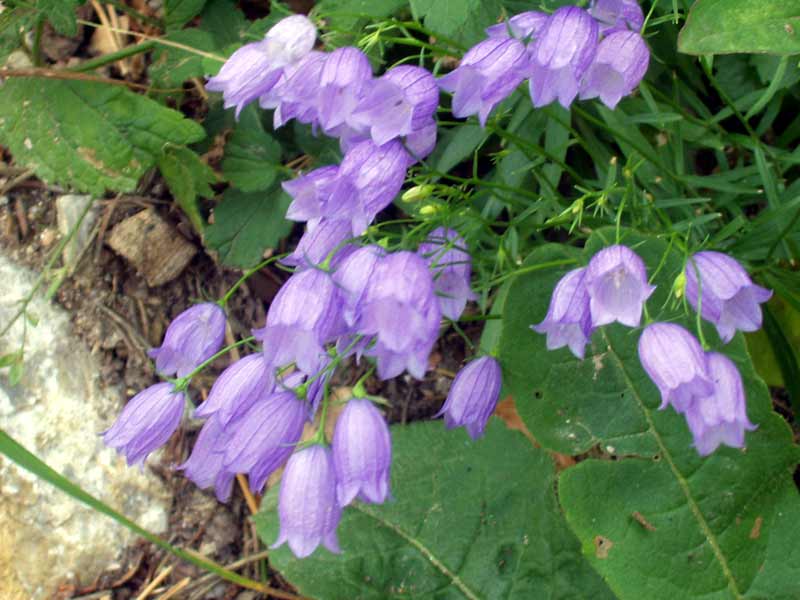- Campanula
:"For the main belt asteroid, see
1077 Campanula . Thehydrozoa n genus "Campanula" is usually included in "Campanularia " today."Taxobox
name = "Campanula"

image_width = 240px
image_caption = "Campanula cespitosa"
regnum =Plant ae
divisio = Magnoliophyta
classis =Magnoliopsida
ordo =Asterales
familia =Campanulaceae
genus = "Campanula"
genus_authority = L.
subdivision_ranks = Species
subdivision = See text."Campanula" ("Cam-pá-nu-la") is one of several genera of in the family
Campanulaceae with the common name bellflower. It takes its name from their bell-shapedflower s—"campanula" isLatin for "little bell".The genus includes about 300
species and several subspecies, distributed across the temperate regions of theNorthern Hemisphere , with the highest diversity in theMediterranean region east to theCaucasus .The species include annual, biennial and perennial plants, and vary in habit from dwarf arctic and alpine species under 5 cm high, to large temperate grassland and woodland species growing to 2 m tall.
The leaves are alternate, sessile, and often vary in shape on a single plant, with larger, broader leaves at the base of the stem and smaller, narrower leaves higher up; the leaf margin may be either entire or serrated (sometimes both on the same plant). Many species contain white
latex in the leaves and stems. The flowers are produced in panicles (sometimes solitary), and have a bell-shaped, five-lobed corolla, typically large (2-5 cm or more long), mostly blue to purple, sometimes white or pink. Thefruit is a capsule containing numerous smallseed s.Well-known species include the northern European "Campanula rotundifolia", commonly known as
Harebell inEngland and Bluebell inScotland , and the southernEurope an "Campanula medium", commonly known asCanterbury Bells , which is a cultivatedgarden plant in theUnited Kingdom . As well as several species occurring naturally in the wild in northernEurope , there are many cultivated garden species. The species "Campanula rapunculus", commonly known asRampion Bellflower , Rampion, or Rover Bellflower, is an annualvegetable and a populargarden plant , though sometimes considered too invasive. There are blue, purple and white varieties. TheBrothers Grimm 's taleRapunzel gave its name to this plant."Campanula" species are used as food plants by the
larva e of someLepidoptera species includingCommon Pug (recorded on Harebell),Dot Moth ,Ingrailed Clay (recorded on Harebell),Lime-speck Pug andMouse Moth .;Selected species
References and external links
*The Wild Flowers of Britain and Northern Europe; by R and A Fitter; publisher Collins 1974
* [http://www.crescentbloom.com/Plants/Genus/C/A/Campanula.htm See here for a more complete list of species]Other
Campanula was the name of one of Fiore's three flowers in the Sailor Moon R movie.
Wikimedia Foundation. 2010.
